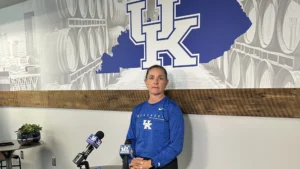
The Colorado Rockies’ historically poor start to the 2025 MLB season, with a 6-33 record, has placed them in the uncomfortable company of the 1988 Baltimore Orioles. The two teams now share the dubious distinction of having the worst 39-game start in Major League Baseball in the last 130 years. This catastrophic beginning has left fans, analysts, and sports historians questioning the state of the Rockies’ franchise and what, if anything, can be done to reverse their fortunes. This article explores the factors that have led to the Rockies’ disastrous performance, the historical significance of their start, and the possible road ahead for a team that now finds itself in the midst of a major crisis.
The Colorado Rockies’ season has been nothing short of a nightmare. The team’s 6-33 record at the 39-game mark has captured the attention of fans and analysts across the country. The Rockies have struggled in virtually every aspect of the game, from pitching to offense, defense to baserunning. The once-promising team has quickly become one of the most disappointing franchises in recent memory.
At the heart of the Rockies’ struggles lies a combination of systemic issues, bad luck, and perhaps some deeper, organizational failings. To understand how the Rockies ended up in this dire position, we need to take a closer look at several key factors that have contributed to their poor performance.
Perhaps the most glaring issue for the Rockies has been their pitching staff. Historically, the team has struggled to develop and maintain a reliable pitching rotation. Coors Field, the Rockies’ home ballpark, is famously known for being one of the most hitter-friendly stadiums in baseball, which has made it difficult for pitchers to perform at a high level.
In 2025, however, the Rockies’ pitching staff has taken a nosedive that is even worse than what we have seen in previous seasons. Starters and relievers alike have been unable to find consistency or effectiveness, and the results have been catastrophic. The rotation, which was supposed to feature some promising arms, has been among the worst in baseball, with ERA figures that would make any manager cringe.
The team has struggled to keep the ball in the park, giving up an alarming number of home runs, and their strikeout-to-walk ratio has been dismal. The bullpen, often a weak point for the Rockies in previous seasons, has been unable to provide the necessary relief. Games have been lost early due to poor starting pitching and lost late due to shaky relief performances, leaving little room for the offense to compensate.
While pitching has been the most glaring weakness, the Rockies’ offense has not been much better. Colorado has historically been known for producing high-scoring games, largely due to the thin air of Coors Field, which leads to more home runs and offensive production. However, in 2025, the team’s offense has been stagnant. The Rockies’ lineup has been plagued by a lack of consistency and an inability to produce timely hits.
Veterans who were expected to lead the charge, such as Charlie Blackmon and Kris Bryant, have underperformed. Meanwhile, younger players who were hoped to provide a spark have shown little promise. While the Rockies’ lineup is capable of putting up occasional big numbers, it has often been stifled by a lack of discipline at the plate, poor situational hitting, and an inability to capitalize on scoring opportunities.
This combination of pitching woes and anemic offense has made it almost impossible for the Rockies to win games. In the rare instances when they have gotten a solid pitching performance, the offense has failed to support it. And on the other hand, when the offense has gotten going, the pitching staff has failed to keep the game in hand. This cycle of poor performance has made it increasingly difficult for the Rockies to find any rhythm or build any momentum.
Another major issue for the Rockies has been injuries. While injuries are a common issue in Major League Baseball, the Rockies have been particularly unlucky. Key players have been sidelined for significant stretches of the season, and the team has been forced to rely on a patchwork roster of unproven or underperforming players. Depth has been a major problem, as the Rockies’ minor league system has failed to produce the necessary talent to provide a stable foundation for the team.
Injuries to both positional players and pitchers have further disrupted an already fragile roster, preventing the team from finding any sustained success. Without a deep farm system or strong bench options, the Rockies have found themselves struggling to replace injured players, and the team has been forced to rely on players who are simply not capable of performing at the Major League level.
At the center of any struggling team is often the leadership, and the Rockies have had their share of questions surrounding the front office and managerial decisions. While manager Bud Black has garnered some praise for his ability to weather the storm of managing a team in such disarray, there are increasing concerns that he might not be the right man for the job. His ability to get the best out of his players has been called into question, especially in the face of such a historically bad start.
Furthermore, the Rockies’ front office, led by General Manager Bill Schmidt, has been criticized for its inability to build a competitive team. While there have been some notable moves made over the years, such as the acquisition of Kris Bryant, the overall construction of the roster has been lacking. The Rockies’ approach to player development, trades, and free-agent signings has often seemed out of touch with the realities of building a championship contender.
Some fans are beginning to call for a full-scale rebuild, with suggestions that the Rockies should focus on developing young talent and making strategic trades to build for the future. The front office’s inability to identify the team’s true weaknesses and address them head-on has contributed to the organization’s current plight.
The Rockies’ 6-33 start puts them in a historical context alongside the 1988 Baltimore Orioles, a team that remains a benchmark for poor starts in MLB history. The Orioles, like the Rockies, were a team in disarray that failed to compete on almost every level. The 1988 Orioles finished with a record of 54-107, which was the worst record in the major leagues that year and one of the worst in modern baseball history.
Much like the Rockies, the 1988 Orioles struggled in virtually every aspect of the game. Their pitching staff was among the worst in baseball, their offense was powerless, and the team lacked the necessary leadership to turn things around. The Orioles were in a rebuilding phase that ultimately saw them trade away key veterans and begin focusing on developing young talent. The Orioles’ failure in 1988, however, set the stage for the eventual rebuilding efforts that would lead to their success in the following decades.
In comparison, the Rockies’ 6-33 start in 2025 is not just a sign of a team in disarray; it is a reminder of how quickly things can spiral out of control in Major League Baseball. While the Orioles’ 1988 season became an anomaly in the franchise’s history, the Rockies will need to make significant changes to avoid becoming a franchise stuck in a cycle of failure.
Given the current state of the team, the road ahead for the Rockies is unclear. The organization will likely have to make some tough decisions in the coming months and years, and it may take several seasons before the Rockies are able to build a competitive roster once again.
One possible course of action for the Rockies is to embrace a full rebuild. This would involve trading away veteran players, focusing on developing young talent through the draft and the minor league system, and building a foundation for future success. Such a rebuild could take years, but it could ultimately set the Rockies up for long-term success, much like what was seen with the 1988 Orioles.
Alternatively, the Rockies could try to patch up their roster with short-term moves and attempt to remain competitive in the near future. However, given the systemic issues that have plagued the team for years, such an approach may only provide temporary relief before the team finds itself back in the same position.
Ultimately, the Rockies are at a crossroads. The 6-33 start to the 2025 season may very well be a turning point for the franchise, one that forces ownership and management to take a hard look at the long-term direction of the team. Whether the Rockies opt for a rebuild or attempt to remain competitive in the short term, one thing is clear: significant changes are necessary if the Rockies are to avoid continuing the downward spiral that has plagued them for much of their history.
The Colorado Rockies’ catastrophic start to the 2025 season has placed the team at the center of a baseball conversation they would rather not be a part of. With a 6-33 record, the Rockies have matched the 1988 Baltimore Orioles for the worst 39-game start in 130 years. While the Orioles were able to eventually rebuild and find success, the Rockies are still in the midst of their struggle. The question now is whether the Rockies can break free from their current slump, or if they are doomed to continue down a path of failure. Only time will tell if the Rockies can turn things around or if they will go down in history as one of the worst teams in Major League Baseball.





